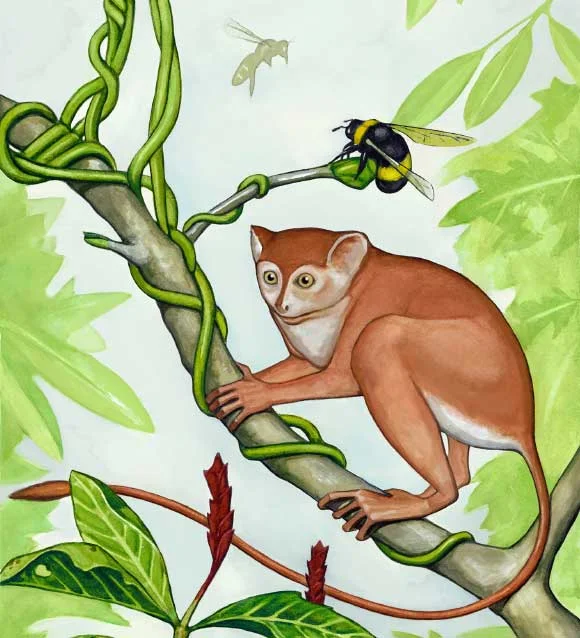 |
| The Illustrated Sutra of Cause and Effect. 8th century, Japan |
Apologists find no difficulty with this assumption yet the more fundamentalist of them get quite hysterical at the thought that all living things might well have had a single common ancestor, but that's a different problem. Let's stick to causality.
Why this assumption?
How many phenomena actually have a single cause?
Let's forget for the moment that some quantum events appear not to have any cause and that the Big Bang, if there ever was a Big Bang, was probably a quantum event, and let's indulge religious apologists and grant them their prefered version of reality in which things happen or not according to the convenience of whatever argument they are trying to deploy at the time. Let's assume that everything that happens actually does have a cause.
Causality (also referred to as causation) is the relation between an event (the cause) and a second event (the effect), where the second event is understood as a consequence of the first.Now, try this mind experiment. Think of a single event which has a single cause, and not a multiplicity of causes, each of which has a multiplicity of causes.
In common usage, causality is also the relation between a set of factors (causes) and a phenomenon (the effect). Anything that affects an effect is a factor of that effect. A direct factor is a factor that affects an effect directly, that is, without any intervening factors. (Intervening factors are sometimes called "intermediate factors".) The connection between a cause(s) and an effect in this way can also be referred to as a causal nexus.
Source: Wikipedia - Causality
I've previously blogged about how many apparent basic laws, such as the Gas Laws, are only laws of mass action; emergent properties which depend on statistical probabilities involving chaotic motions of atoms or molecules. Nothing at the level of the atom or molecule is obeying a Gas Law; only in aggregated probability across the whole population does the property emerge from an underlying chaos.
 |
| What caused the Herald of Free Enterprise to sink? |
Make a splash in water by dropping a stone into it. What single event cause that splash? Gravity? Letting the stone fall? How did your fingers move to cause that event? How about the atomic structure of the rock which gave it solidity and enough density to allow it to fall through the air with enough force to push the water molecules out of the way? How many molecules of water constitute a 'splash'? We're back to laws of mass action and emergent properties from the chaos of water molecules again. Even the atoms of the rock and the water, or rather the fundamental particles from which they are made may well be emergent properties from an underlying chaotic structure of force fields and vibrating multi-dimensional superstrings. The positions of fundamental particles in those atoms can only be described as a probability distribution derived from integrating all possible paths through spacetime.
Which snowflake caused the avalanche? How could it have done that without all the others and in the absence of gravity or without the mountain side? And if there is a single, predictable chain of causality in an avalanche it should be entirely predictable. Guess what! It isn't. An avalanche in progress is a system in total chaos and it's not even possible to accurately predict their occurrence. This is what makes them so dangerous.
So we assume that the Universe behaves pretty much the way things do in our world. We flick a switch or turn a key and something happens. We throw a spear and it flies through the air. If it hits the antelope in the right place the antelope dies and we get food. We press a key on our keyboard and it makes 'p' appear on our computer screen. We assume a narrative - a story behind the event.
We assume A->B->C->D. We assume that there is a simple chain of causality like there seems to be when we strike the match with which we light the fire which burns the wood which boils the water which cooks the food. Actually, I switch an electric hob-ring on, but you get the point.
In fact almost nothing happens because of a single, identifiable cause or even as the endpoint of a chain of single cause-effects. Normally, many things need to happen, some of them in sequence, some in parallel. We can't throw a spear without our brain firing off a salvo of signals to work a myriad of muscle fibres, coordinated by our eyes detecting incoming photons, processing them and passing signals on to our brains for further processing, and after a complex process by which we've weighed the spear, judge the distance, computed the trajectory and coordinated muscles in our arm, shoulder, hands, legs, back, chest and abdomen. And then, of course, gravity and inertia, explained by Newton's Laws of Motion, takes over, as well as a whole mass of small effects as the spear pushes molecules of air around causing friction and drag. Throwing a spear is not a single event in any causal sense of the word. It is a whole bunch of different events coming together to produce a single effect - the spear travelling from A to B.
So why assume a universe exists because of a single, identifiable cause?
Perhaps the major challenges in physics is to come up with a Grand Unified Theory which unifies quantum mechanics with Einsteinian Relativity because it is assumed there should be a single principle as the basis of all physics. At the moment, Relativity explains gravity while quantum mechanics explains the other three forces - the strong and weak nuclear forces and electromagnetism. Because gravity exactly balances the sum of the other three forces, making the total energy in the Universe equal precisely zero, it is assumed they have a common 'cause' expressible by a single theory. The problem is that no one has managed to unify them yet (note: this isn't the same as saying they can't be, or won't be).
But why do we assume there should be a single cause? Why can't relativity and quantum mechanics have different causes which together caused the Universe? Why limit it to two causes even? It is said that a tendency to assume a single cause is more likely in scientists from monotheistic cultures. Is this merely an example of a culturally biased assumption; of intuition over-riding what the evidence points to; of an argument from personal incredulity?
There is of course nothing other than a baseless assumption behind the religious apologist's insistence that the Universe had a single cause, just as there is nothing behind their assumption that the single cause must have been their favourite magic friend. It is nothing more than a manifestation of their insistence that the Universe must be as they require it to be. Just because a medieval theologian who knew nothing of physics or cosmology, and probably believed that Earth was a flat disc round which a small sun orbited, thought there should be a single cause, and just because primitive people from the beginnings of recorded history who knew even less thought that the Universe worked by magic, doesn't mean there is or it does.










